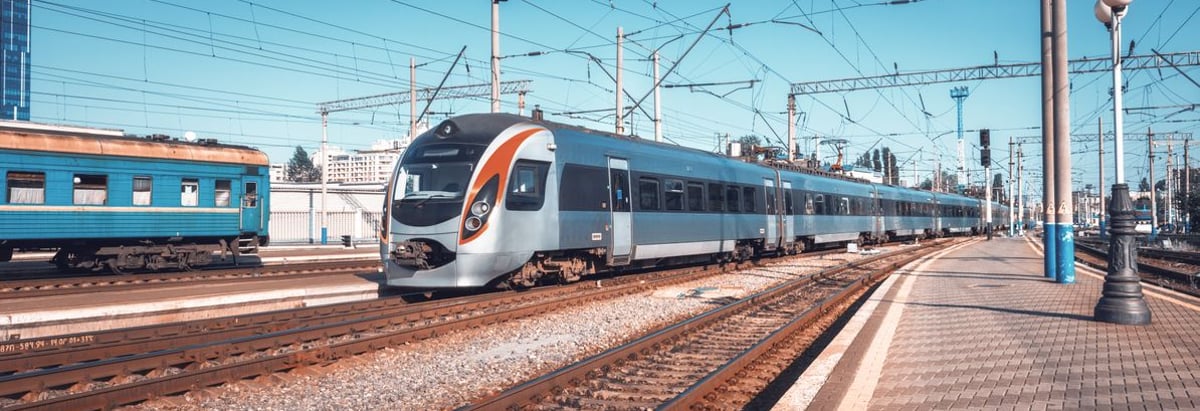Stock Analysis
- Hong Kong
- /
- Transportation
- /
- SEHK:525
Guangshen Railway (HKG:525) Has A Pretty Healthy Balance Sheet

Legendary fund manager Li Lu (who Charlie Munger backed) once said, 'The biggest investment risk is not the volatility of prices, but whether you will suffer a permanent loss of capital.' When we think about how risky a company is, we always like to look at its use of debt, since debt overload can lead to ruin. We note that Guangshen Railway Company Limited (HKG:525) does have debt on its balance sheet. But is this debt a concern to shareholders?
When Is Debt A Problem?
Debt and other liabilities become risky for a business when it cannot easily fulfill those obligations, either with free cash flow or by raising capital at an attractive price. Part and parcel of capitalism is the process of 'creative destruction' where failed businesses are mercilessly liquidated by their bankers. However, a more common (but still painful) scenario is that it has to raise new equity capital at a low price, thus permanently diluting shareholders. Of course, the upside of debt is that it often represents cheap capital, especially when it replaces dilution in a company with the ability to reinvest at high rates of return. The first step when considering a company's debt levels is to consider its cash and debt together.
View our latest analysis for Guangshen Railway
How Much Debt Does Guangshen Railway Carry?
As you can see below, Guangshen Railway had CN¥1.88b of debt at March 2024, down from CN¥1.98b a year prior. But on the other hand it also has CN¥2.56b in cash, leading to a CN¥679.2m net cash position.
A Look At Guangshen Railway's Liabilities
The latest balance sheet data shows that Guangshen Railway had liabilities of CN¥7.67b due within a year, and liabilities of CN¥2.91b falling due after that. Offsetting this, it had CN¥2.56b in cash and CN¥6.68b in receivables that were due within 12 months. So it has liabilities totalling CN¥1.34b more than its cash and near-term receivables, combined.
Given Guangshen Railway has a market capitalization of CN¥22.4b, it's hard to believe these liabilities pose much threat. But there are sufficient liabilities that we would certainly recommend shareholders continue to monitor the balance sheet, going forward. While it does have liabilities worth noting, Guangshen Railway also has more cash than debt, so we're pretty confident it can manage its debt safely.
Although Guangshen Railway made a loss at the EBIT level, last year, it was also good to see that it generated CN¥1.7b in EBIT over the last twelve months. The balance sheet is clearly the area to focus on when you are analysing debt. But it is future earnings, more than anything, that will determine Guangshen Railway's ability to maintain a healthy balance sheet going forward. So if you're focused on the future you can check out this free report showing analyst profit forecasts.
Finally, a business needs free cash flow to pay off debt; accounting profits just don't cut it. Guangshen Railway may have net cash on the balance sheet, but it is still interesting to look at how well the business converts its earnings before interest and tax (EBIT) to free cash flow, because that will influence both its need for, and its capacity to manage debt. During the last year, Guangshen Railway produced sturdy free cash flow equating to 57% of its EBIT, about what we'd expect. This free cash flow puts the company in a good position to pay down debt, when appropriate.
Summing Up
We could understand if investors are concerned about Guangshen Railway's liabilities, but we can be reassured by the fact it has has net cash of CN¥679.2m. So we are not troubled with Guangshen Railway's debt use. Another positive for shareholders is that it pays dividends. So if you like receiving those dividend payments, check Guangshen Railway's dividend history, without delay!
If you're interested in investing in businesses that can grow profits without the burden of debt, then check out this free list of growing businesses that have net cash on the balance sheet.
New: Manage All Your Stock Portfolios in One Place
We've created the ultimate portfolio companion for stock investors, and it's free.
• Connect an unlimited number of Portfolios and see your total in one currency
• Be alerted to new Warning Signs or Risks via email or mobile
• Track the Fair Value of your stocks
Have feedback on this article? Concerned about the content? Get in touch with us directly. Alternatively, email editorial-team (at) simplywallst.com.
This article by Simply Wall St is general in nature. We provide commentary based on historical data and analyst forecasts only using an unbiased methodology and our articles are not intended to be financial advice. It does not constitute a recommendation to buy or sell any stock, and does not take account of your objectives, or your financial situation. We aim to bring you long-term focused analysis driven by fundamental data. Note that our analysis may not factor in the latest price-sensitive company announcements or qualitative material. Simply Wall St has no position in any stocks mentioned.
About SEHK:525
Guangshen Railway
Engages in the railway passenger and freight transportation businesses in the People’s Republic of China.

